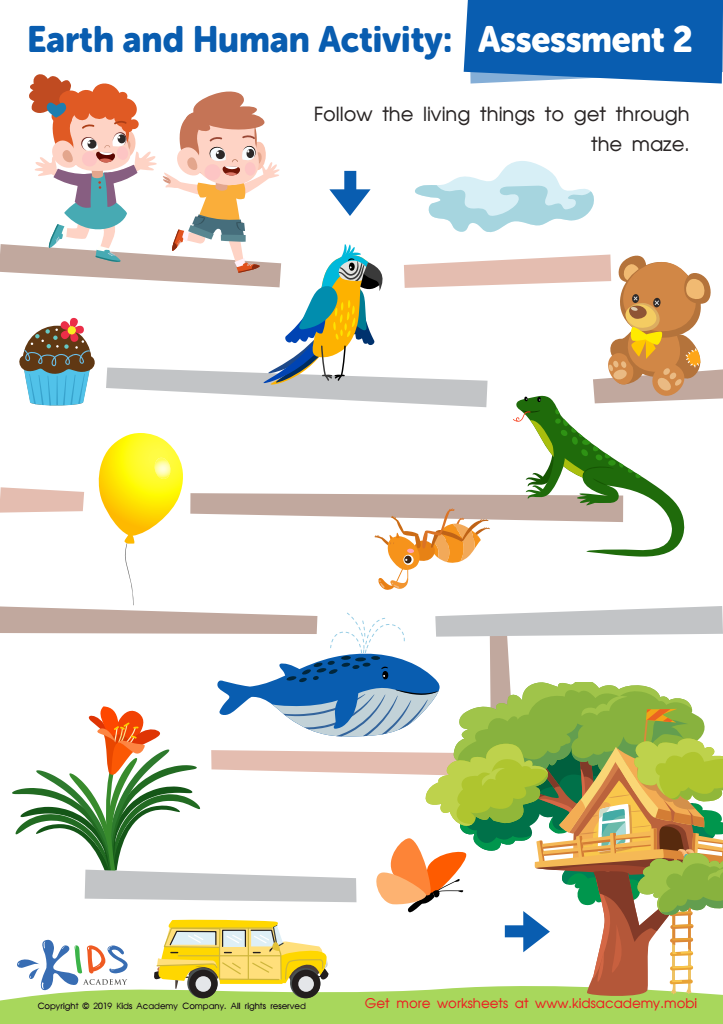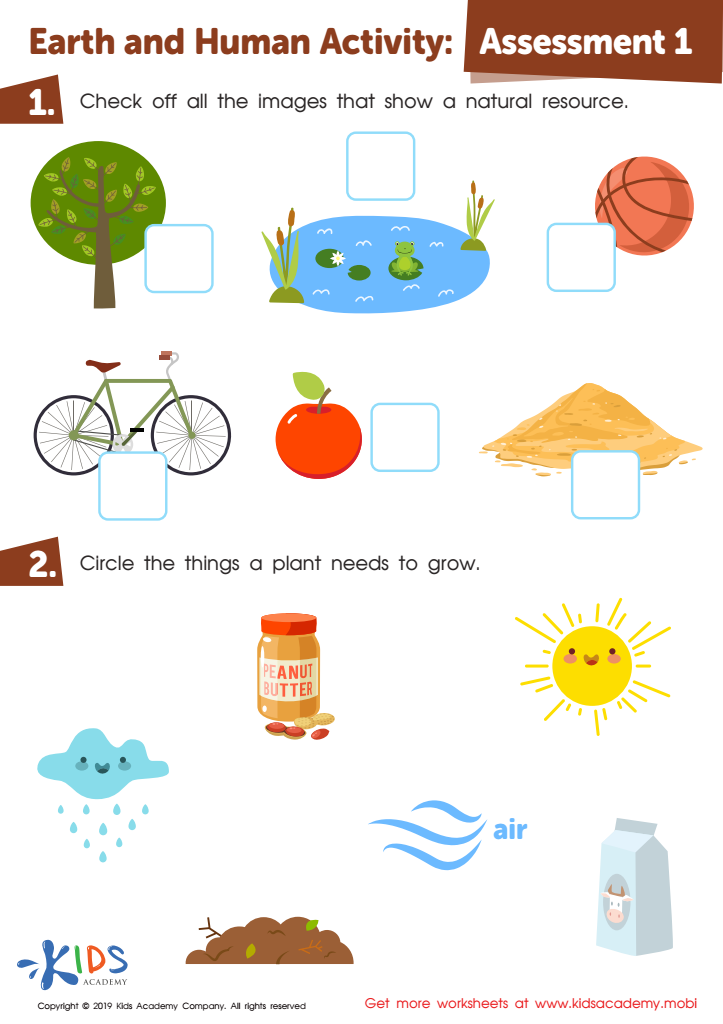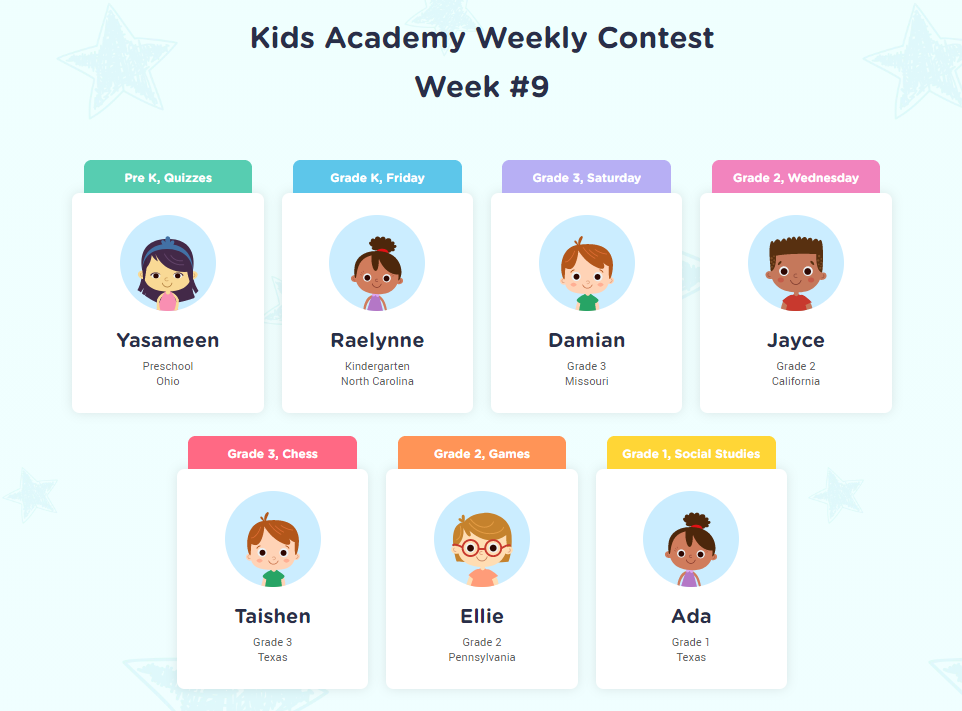Fun and Engaging Printable Worksheets for Ages 4-5: Explore Plants and Animals with Knowledge Check Activities
2 filtered results
-
From - To


Earth and Human Activity: Assessment 2 Worksheet


Earth and Human Activity: Assessment 1 Worksheet
Plants and Animals worksheets activities serve as a pivotal educational tool, especially for young learners, in comprehending the fundamental aspects of biology and the natural world. These activities are designed not only to foster a deep appreciation for the diversity of life on Earth but also to enhance critical thinking and observational skills among students.
Firstly, Plants and Animals worksheets activities introduce children to the concept of life science in an engaging and interactive manner. By actively participating in these exercises, students learn about the different types of plants and animals, their habitats, life cycles, and the roles they play in our ecosystem. This hands-on approach promotes curiosity and encourages students to explore the natural world around them, making learning both fun and impactful.
Moreover, these worksheet activities are instrumental in developing important scientific skills. For instance, through classification exercises, children learn to identify and categorize various species, which sharpens their observation skills. Similarly, by engaging in life cycle diagrams or food chain puzzles, they begin to understand complex biological processes and ecological relationships. This not only aids in their academic growth but also lays a solid foundation for future scientific endeavors.
Another significant advantage of Plants and Animals worksheets activities is their flexibility and adaptability to different learning environments and styles. Whether in a classroom setting, homeschool curriculum, or as supplementary educational material, these activities can be tailored to meet the specific needs and interests of each student. This personalized approach ensures that every learner can benefit from these resources, regardless of their academic level or learning preferences.
In conclusion, Plants and Animals worksheets activities are a highly useful educational resource. They foster a love for nature, develop essential scientific skills, and adapt to diverse learning contexts, making them an invaluable part of any life science curriculum. Engaging with these activities, students not only gain knowledge but also cultivate respect and responsibility towards the environment.

 Assign to My Students
Assign to My Students



















